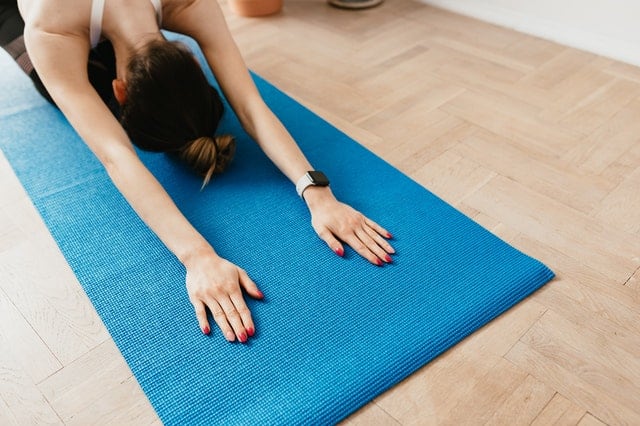How many hours a day should you wear a compression sleeve? The most important time to wear your sleeve is during exercise or when you will be experiencing the pressure changes associated with air travel. Some people need to wear a compression garment 24 hours a day, while others only need to wear them during air travel.
Then, Can compression arm sleeves cause problems? An injury or a pain point shouldn’t cause additional health concerns, but that’s exactly what happens when you use compression therapy. Compression can cause blood pressure and heart rate to increase. That’s because your body must push your blood through the area that’s being squeezed. But it gets even worse.
in the same way, How tight should an arm compression sleeve be? How tight should they be? Compression sleeves for lymphedema need to be tight enough to encourage the flow of lymph up toward the shoulder but not so tight that they cause numbness or tingling. A lymphedema therapist or durable medical equipment company can ensure that a person gets a sleeve that fits them correctly.
Should compression sleeves be tight? The knee sleeve should be as tight as possible without restricting any movement. The tightness should help promote blood flow in the knee but not cut off circulation or pinch the skin.
Do compression sleeves really work? Research shows that compression sleeves help to increase the blood flow toward your heart and stabilize the muscles by improving oxygen delivery. Since blood flow increases, compression sleeves keep the muscles warm, rested, and loose.
Can compression sleeves cause blood clots?
Compression socks have not been shown to cause deep vein thrombosis, which are more serious blood clots. Severe complications from compression garments are rare and typically occur only in people who should not wear compression socks or who wear them incorrectly.
How do I know my arm sleeve size?
The first and most important thing to understand about arm sleeve sizing is that the width of the arm sleeve at your bicep area has to be smaller than the width of your relaxed bicep or else it will not stay up. Typically, an arm sleeve will be about . 5 to 1.0 inches smaller than the width of your relaxed bicep.
Can I sleep in my compression sleeves?
But it’s not necessarily harmful to wear compression garments while you’re sleeping, especially for short periods. It’s no problem to leave them on for a nap, for example, if you don’t want to wiggle out of them before you doze and pull them on again after.
How do you put a compression sleeve on your arm?
How long should I wear compression arm sleeves?
Your arm should be completely dry, and if you apply lotions, the area should be allowed to dry completely before you put the sleeve on. Well-cared-for sleeves often last for around six months before they need to be replaced.
Is it OK to wear a compression sleeve all day?
No. Compression sleeves put constant pressure on your circulatory system. While this level of pressure may be safe during exercise, it is too much for your body at rest.
Is it OK to wear compression sleeves all day?
No. Compression sleeves put constant pressure on your circulatory system. While this level of pressure may be safe during exercise, it is too much for your body at rest.
Who makes the best compression sleeve?
Brace Yourself: The 8 Best Compression Arm Sleeves For High Performance
- Under Armour Adult Compression Arm Sleeve.
- B-Driven Sports Arm Sleeve.
- Copper Compression Recovery Elbow Sleeve.
- Bucwild Sports Sports Compression Arm Sleeve.
- Shinymod UV Protection Arm Sleeves.
- Kunto Elbow Compression Support Sleeve.
What compression sleeves are best?
Our best overall selection is the McDavid Calf Compression Sleeve for its contoured compression design, and antimicrobial feature that helps keep it clean. The Udaily Calf Compression sleeves are a good budget option with nine different color choices.
- Our Picks.
- What to Look For.
- Why Trust Verywell Fit?
Are compression sleeves worth it?
The most beneficial times to wear compression are during running, for recovery, and while traveling. During: Compression socks and sleeves bring oxygen rich blood filled with nutrients and hydration to the muscles. It also reduces vibration, which can improve muscle efficiency and mechanics.
How should compression sleeves fit?
Compression sleeves should fit well enough to stay in place on your legs without moving around. If they’re moving up or down as you run, chances are they aren’t working. Calf sleeves deliver a graduated compression. It’s normal for them to be tighter at your ankles than at the top of your calves.
Do compression sleeves work?
The use of these materials produces a slight squeeze of the muscles. Research shows that compression sleeves help to increase the blood flow toward your heart and stabilize the muscles by improving oxygen delivery. Since blood flow increases, compression sleeves keep the muscles warm, rested, and loose.
How long should a compression sleeve be worn?
Your arm should be completely dry, and if you apply lotions, the area should be allowed to dry completely before you put the sleeve on. Well-cared-for sleeves often last for around six months before they need to be replaced.
How long should you wear arm compression sleeves?
Your arm should be completely dry, and if you apply lotions, the area should be allowed to dry completely before you put the sleeve on. Well-cared-for sleeves often last for around six months before they need to be replaced.
What happens if compression sleeve is too tight?
If the compression sleeves are too tight, they will be uncomfortable and impossible to put on. If they are too loose, they won’t provide enough compression, and they would slide down your leg. Material.






